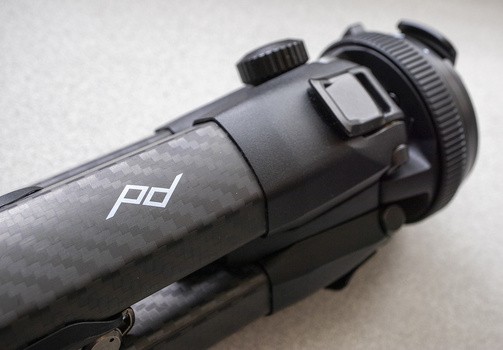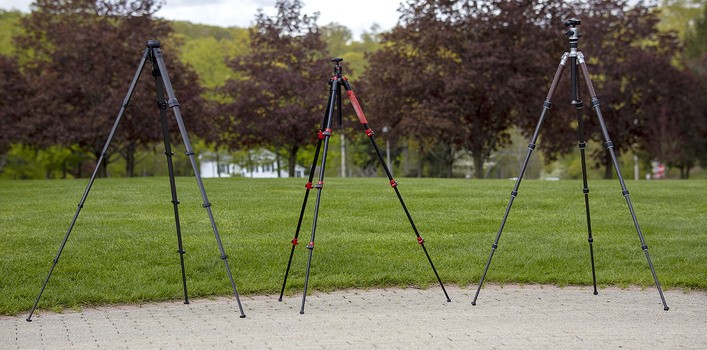For years, the quest for the perfect travel tripod has been driven by the needs of photographers who, like myself, value portability without compromising stability. The evolution of travel tripods has been a boon, especially for those of us who remember lugging heavier, traditional tripods like the Manfrotto 190 to capture the perfect shot. While models like the carbon fiber Manfrotto 190 offered some weight relief, the emergence of truly compact travel tripods marked a significant shift.
This brings us to a comparison of three contenders in the travel tripod arena: the MeFoto RoadTrip Travel Tripod and the Manfrotto BeFree Travel Tripod, both excellent options in the $200-$250 range, versus the premium Peak Design Carbon Travel Tripod, commanding a significantly higher price tag of around $650. The key question is: does investing more in a travel tripod truly translate to a superior experience and tangible benefits?
I argue that in the case of the Peak Design Travel Tripod, it absolutely does. Let’s explore why.
The Travel Tripod Showdown: Contenders in Focus
For this review, I’m drawing on my experience with an earlier aluminum version of the Manfrotto BeFree, noting that the current comparable model is the BeFree Advanced with its user-friendly lever locks. The MeFoto RoadTrip being considered is similar to the Classic Leather edition I previously reviewed, with minor updates in later models.

Innovative ball head design of the Peak Design Travel Tripod, maximizing compactness for travel.
Peak Design entered the scene with their Travel Tripod, initially launched on Kickstarter in 2019. Alongside the carbon fiber version, they also offer a more budget-friendly aluminum version for $380. While comparisons have been made questioning its stability against models like the RoadTrip, it’s crucial to recognize that we are examining tripods in different categories, with varying design philosophies and intended user experiences. The core decision lies in understanding if these distinctions justify the price difference. Let’s delve into the design and features that set them apart.
Design Innovations: Peak Design Redefines Travel Tripods
Interestingly, within similar price brackets, you’ll find carbon fiber options from MeFoto, while Manfrotto at the same price point typically offers aluminum. Carbon fiber is often favored in tripods due to its significant weight advantage. While a few ounces might seem negligible, when you’re carrying gear throughout a day of travel and photography, the difference becomes noticeable. The weight comparison is stark: Manfrotto at 3.6 lbs, MeFoto at 3 lbs, and Peak Design at a mere 2.8 lbs. This represents nearly a 25% weight reduction from the heaviest to the lightest. Manfrotto’s carbon fiber BeFree matches Peak Design’s weight at 2.8 lbs, but comes with a similar price tag and, arguably, a less streamlined design compared to the Peak Design’s innovative approach.
The conventional travel tripod design often employs a reverse-folding mechanism. This means the legs fold upwards around the extended center column for compact storage. However, in practice, setting up these tripods involves a somewhat cumbersome process of unfolding the legs and repositioning the center column. While this design saves space when packed, the space advantage diminishes once the tripod is deployed. Repacking for quick transitions during shoots can also be inconvenient. Both the Manfrotto BeFree and the MeFoto RoadTrip utilize this reverse-folding design.
Peak Design, however, breaks away from this convention. Their travel tripod boasts a unique leg design that isn’t cylindrical. These legs ingeniously nest around a center column designed to match their shape, resulting in an exceptionally compact folded form. The Peak Design Travel Tripod sets up much like a traditional tripod, eliminating the “gymnastics” required by reverse-folding models. Remarkably, it achieves a smaller packed size than both competitors, largely thanks to its custom-engineered ball head. This ball head integrates seamlessly with Peak Design’s Arca-compatible plate system and cleverly fits within the leg crevices when folded, showcasing truly brilliant design thinking.
In terms of extended height, all three tripods are comparable: Manfrotto reaches 56” (newer models 59”), Peak Design 60”, and MeFoto 61”. However, a standout feature of the Peak Design is its removable center column. This allows for significantly lower shooting angles compared to the others, a feature I personally find invaluable for creative compositions. This low-angle capability, facilitated by the removable center column, is a major advantage of the Peak Design Travel Tripod.
Regarding load capacity, Peak Design and Manfrotto are rated for approximately 20 lbs of gear, while MeFoto is slightly lower at 17.6 lbs. Folded dimensions are similar on paper, ranging from 15.4 (MeFoto) to 15.75 inches (Manfrotto). Yet, the Peak Design’s folded form is not only more compact in volume but also requires fewer steps to achieve, making it truly travel-friendly.
Bonus Features and Practicality in the Field
The Manfrotto BeFree, in many ways, represents a “no-frills” approach – providing essential tripod functionality without excessive extras. However, when considering tripods in this category, additional features can enhance usability.
Both the MeFoto and Peak Design tripods include a center column hook for added stability by hanging weight (like a camera bag). While not essential, it’s a useful feature. Bubble levels are also present on the MeFoto and Peak Design. However, with modern cameras often featuring electronic levels, these become less critical and, in my experience, prone to damage over time.
MeFoto offers a monopod conversion by detaching a leg. While a unique feature, its practical utility is debatable. Photographers who regularly use monopods likely already own dedicated monopod systems, and disassembling a tripod for occasional monopod use might not be ideal in the field. It’s a novelty that might not see frequent use for serious photographers.

Height comparison of Peak Design Travel Tripod, Manfrotto BeFree, and MeFoto Roadtrip Classic Leather tripods at maximum extension without center columns.
MeFoto utilizes twist locks, whereas Manfrotto and Peak Design employ lever locks. This often comes down to personal preference. I find lever locks more intuitive and quicker to operate, offering immediate visual confirmation of leg lock status, which speeds up workflow.
Peak Design adds further thoughtful touches. The reversible center column allows for shooting directly downwards, ideal for product photography or unique perspectives. A cleverly integrated cell phone mount within the center column is another bonus, particularly useful for content creators who frequently use smartphones alongside dedicated cameras. As someone who often compares mirrorless cameras to smartphones for image quality, I appreciate this inclusion.
However, a minor drawback of the Peak Design system is the reliance on hex keys for attaching the camera plate and removing the center column. While there’s a dedicated storage spot for these keys on the tripod, the risk of misplacing them is a slight concern. Tool-less adjustments would be a welcome refinement.
Finding Your Ideal Travel Companion
Having used the Manfrotto BeFree for years, I acknowledge its solid performance and reliability. Yet, objectively, it has been surpassed by newer designs.

Achieving dynamic low-angle shots with a tripod positioned close to the ground.
While the MeFoto RoadTrip adds some features to the standard Manfrotto formula, the overall size and form factor remain similar. While I appreciated it in my review, it didn’t offer enough differentiation to become a clear preference over the Manfrotto.
The Peak Design Travel Tripod, however, represents a paradigm shift in travel tripod design. It’s a comprehensive reimagining that sets a new benchmark in the category, making previous models feel less innovative.
Investing in a quality tripod is a long-term decision. Cameras evolve, but a well-built tripod can last for well over a decade. While $650 for the Peak Design Carbon Travel Tripod is a significant investment, the weight and space savings it offers, coupled with its innovative design, make it a worthwhile expense for serious travel photographers. For the same price as the MeFoto, the Manfrotto is a decent option, but the advancements in the Peak Design Travel Tripod justify the premium for those who prioritize portability and design excellence.
If budget is a primary concern, the $380 aluminum Peak Design Travel Tripod offers the same groundbreaking design, albeit with a slight weight increase.
What are your experiences with travel tripods? Do you have a preferred model? Share your recommendations in the comments below.